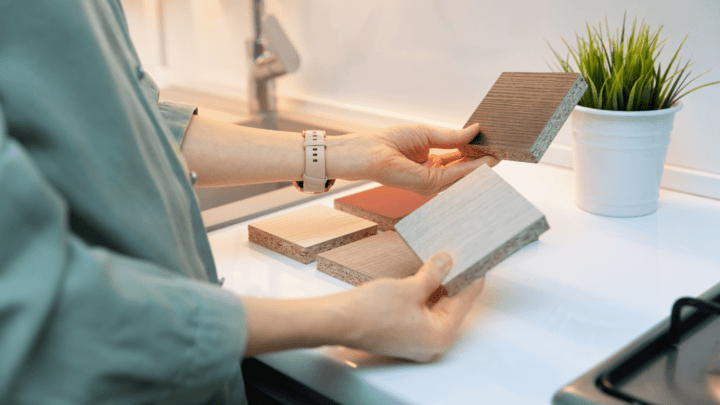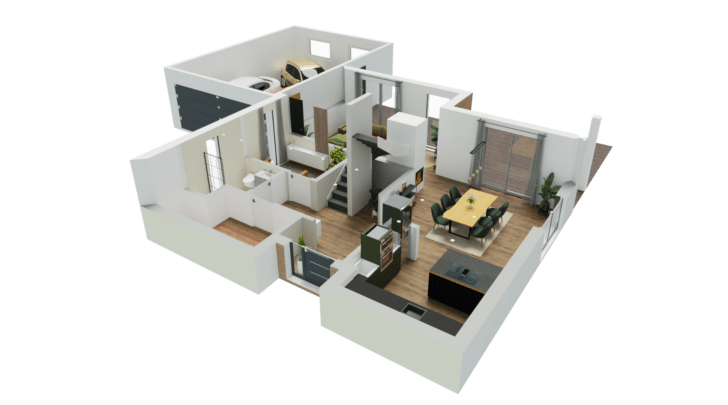How to Become an Interior Decorator?

High-speed & Pro
Intuitive to use with 0 Learning Curve
Complete with Branded & Generic Furniture
Curious about how you can enter the creative world of interior decorating? If you love to channel your artistic abilities into enhancing the layout and aesthetics of a room, check out our guide on how to get started.
Have you binge-watched your favorite home decor show and wondered “How can I become an interior decorator?” If you have an eye for improving the functionality, layout, and aesthetics of a room, this could be a rewarding direction that lets you put your creative skills to use. Beyond the furnishings and aesthetics, professional interior decorators play a fundamental role in enhancing the spaces where we work and live. Below, we outline more about what this role entails, as well as the skills and education that will help you achieve your dream job.
Interior Decorator vs. Interior Designer
First, let’s get clear on the difference between an interior decorator versus a designer since they are often confused as the same thing. Although these two roles can intertwine, there are distinct differences that are important to be aware of.
Interior designers focus on spatial planning, which can include drafting floor plans for renovating and building structures from the ground up. They also work closely with architects and contractors to produce designs. Thus, they require formal education, training, and usually an apprenticeship.
The role of an interior decorator focuses on the superficial layers of an interior and how to enhance the appearance and enjoyment of it. They work with their clients to select color palettes, furniture, and other accessories to develop a stylish and cohesive-looking space. Unlike designers, this doesn’t typically include any structural components.
How to Become a Home Decorator?
To become a home decorator, you are not required to have formal education. However, many professional interior decorators do pursue a college degree in a related field and/or certification from an accredited organization like the CID – Certified Interior Decorators International. Even though these are not mandatory, having some education can be very beneficial. It can sharpen your creative skills, demonstrate that you understand the fundamental concepts of décor, and it can make you appear more valuable to potential clients.
Whether you decide to pursue an education in this field or not, there are a few key steps that you will need to take to succeed in this industry:
Gain Experience as an Apprentice
There’s no better way to master the art of any profession than by working directly in the field with experts who can teach you the skills needed to succeed. Interning and working with an expert will give you invaluable knowledge and guidance that will help establish your career.
Build a Portfolio
No matter what your level of education or training may be, one key element that all interior decorators should have if they want to succeed, is a portfolio. This should showcase your best work since it will be used to share with prospective clients to convince them that your services are worth it. You can build your portfolio online and maintain a physical one as well.
Develop a Network within the Field
As an interior decorator, projects won’t simply be handed to you. In most cases, even with a degree, you’ll need to hustle to find your own clients. This means you’ll need to start building rapport, which is why networking is essential for establishing your reputation as an interior decorator. Thus, you’ll need to dedicate time and effort to cultivate relationships with suppliers, other decorators, and homeowners. Joining professional organizations is also an ideal way to get your name out there, sharpen your interpersonal skills, and network while keeping up with the latest trends.
How to Become an Interior Decorator without a Degree
Since a college degree and certificate are not mandatory for this field, you may be wondering how to become an interior decorator without a degree. Even without formal education, there are a variety of courses that you can take to learn the fundamentals of color, spatial planning, room layouts, styling, and more. Having some courses under your belt is an excellent way to authenticate your skills.
And as previously mentioned, regardless of your education, having experience and a portfolio is crucial. You can offer interior decorating services for free to family and friends to hone your skillset and develop your portfolio. You could also practice in your own home. However, working for a professional decorator is one of the best ways to gain in-depth experience and training within the field.
How Long Does it Take to Become an Interior Decorator?
Now that you know your options for pursuing this career, you’re probably wondering how long does it take to become an interior decorator. The answer to this question will vary based on the specific direction you choose. However, on average, it can take between 6 months to 2 years to build and develop your network and portfolio. If you decide to take a degree, this can take approximately 2 to 4 years to complete. But keep in mind, this can also improve your chances for gaining employment sooner.
If you have a creative knack for setting up rooms in a visually appealing way, or are complimented regularly on how you decorate your home, this could be the right calling for you. Follow these steps and tips to get started!
You may also like...
Discover how HomeByMe is a complete turnkey tool for your projects.
High-speed & Pro
Intuitive to use with 0 Learning Curve
Complete with Branded & Generic Furniture
Get started!




